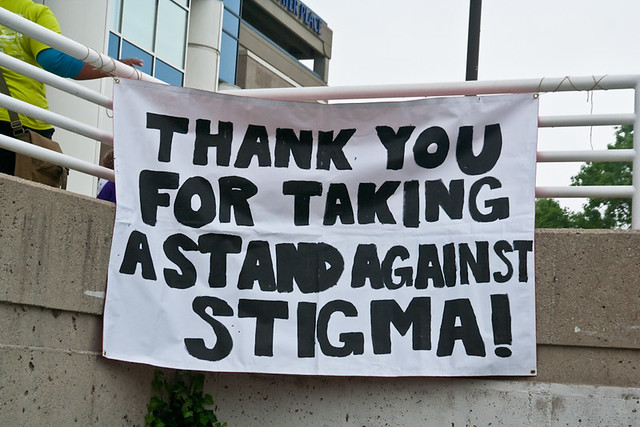The news of the Sandy Hook Elementary shooting last week hit the Australian media swiftly and pervasively. Juxtaposed against a backdrop of constant cheery carols and incessant ads for toys on TV, the imagery of twenty primary school children and six of their teachers being shot by 20-year-old Adam Lanza one week before Christmas is a tragedy that stirs an emotional response in even the most apathetic individual. The public is sickened, horrified and grief-stricken, and there are questions to be asked: How could anybody do this? When is America going to learn?
Within the Australian media, the implied lesson here is, of course, the consequences of lax gun control laws in the United States. The Sandy Hook massacre is the third and most horrific major shooting incident in the States this year alone, and once again their low level of weapon regulation has been thrust into the world spotlight. As comparisons are made with John Howard’s successful and immediate reaction to our own Port Arthur massacre, it seems that this tragedy may be the final straw before Republican gun-touting die-hards finally begin to legislate towards a safer America.
Too good to be true? Perhaps.
Republican congressman and pro-gun lobbyist Louie Gohmert was outspoken in his response to the shooting.
“I wish to God she had had an M-4 in her office,” he announced of the Elementary School’s principal in an interview on Fox News on December 16, “So when she heard gunfire, she pulls it out… she takes him out, takes his head off before he kills those precious kids” (cue exasperated sighs from the Liberal media).
Historically, gun sales are seen to spike dramatically in the weeks following a major shooting, as individuals and families secure their own safety while in turn perpetuating the paradigm that reduces the safety of their nation. This week an 11-year-old Utah resident was arrested after bringing a concealed handgun to school in an act of fearful and ignorant confusion. No matter one’s stance, gun control has resonated as the central media issue in the wake of the Sandy Hook massacre – but how central is it really, and what other issues are being pushed out of the spotlight?
Lisa Long’s touching article I am Adam Lanza’s Mother was first posted on thebluereview.org on December 14th and has since gone viral, attracting media attention worldwide and drawing passionate responses from many different perspectives. The article calls for a greater focus on mental health issues in the wake of tragedies such as this, within the context of a mother’s struggles with her own mentally ill son (Read the article here). Long illustrates perfectly the difficulties faced by parents and carers when those close to them fall through the gap between hospitalisation and incarceration, where mental health support should take the lead. “I live with a son who is mentally ill,” she writes. “I love my son. But he terrifies me.”
There is no question that a 20-year-old man who is capable of shooting 20 young children at close range is extremely unwell. According to several media reports, Adam Lanza allegedly suffered from Asperger’s syndrome along with crippling social anxiety, and Long’s article has thankfully opened up a popular discussion about the way mental health relates to the shooting. While many have responded positively, a prevalence of negative responses centre around the common stance that mental illness as a defence is ‘the easy way out’, and that Lanza was ‘just disturbed, not unwell’. Comments such as these are indicative of the general public’s misunderstanding of mental health issues as being the fault of the individual, and that pointing them out somehow detracts from their culpability.
This is exactly where the focus on new legislation and policy should be concentrated to prevent tragedies in the future. When a first-world country has no healthcare system available to those most in need, when mental health is under-reported and stigmatised in popular media, and when people affected by mental illness live in too much shame to seek treatment for themselves or their loved ones, then it is time for some changes to be made.
In Australia, our public health system allows for a relatively good level of care and treatment for people who can’t afford to fork out money for expensive mental health specialists. There are community programs with positive success rates that act to rehabilitate offenders with mental disorders back into the community. Yes, our health system is desperately starved of resources, faced with constant budget cuts and an overload of patients, but for the moment people in desperate need can obtain a basic level of mental health services without having to fork out for private insurance, and for many, the prospects of rehabilitation are good.
So what do we need to work on? A lack of general understanding of mental illness brings stigma, awkwardness, and avoidance within the media. Public insight is low, and considering that one in six Australians will experience depression in their lifetime, this needs to change (for more information, visit www.beyondblue.org.au). Mental illness is not a popular issue, and the more attention it is given within mainstream media, the more government funding and initiatives will be dedicated to improving the situation. It may be a difficult reality to accept, but like cancer, car accidents and anaesthesia, mental illnesses too have a mortality rate. Our focus needs to be on preventative healthcare measures that lower the risk of possible offending, increase the accessibility of medical support, and promote discussion and acceptance on a national scale. We need to focus on early treatment and diagnosis for the Adam Lanzas of the world, rather than just taking the guns out of their hands.
Written by Kate O’Neill.
If you need support you can contact Lifeline on 13 11 14 or Lifeline.org.au, Kids Help Line 1800 55 1800 or Kidshelpline.com.au or Beyondblue.org.au, or consider speaking with your local GP.





















